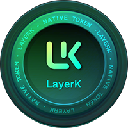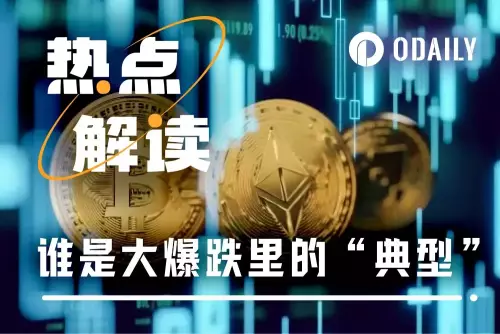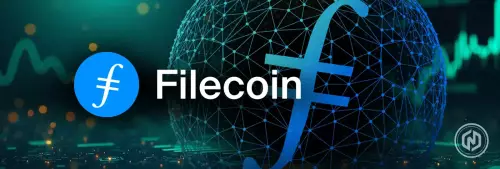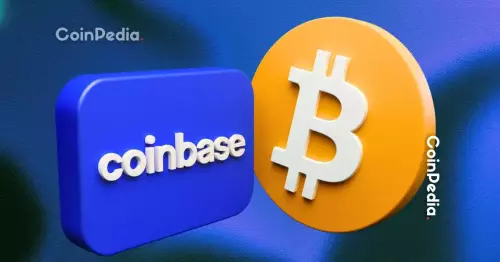 |
|
 |
|
 |
|
 |
|
 |
|
 |
|
 |
|
 |
|
 |
|
 |
|
 |
|
 |
|
 |
|
 |
|
 |
|
Cryptocurrency News Articles
Blockchain Data Indexing: The Key to Unlocking Web3's Potential
Aug 24, 2024 at 12:45 pm
Blockchain data indexing platforms are one of the most consequential, yet largely unknown innovations in the Web3 industry, helping to free up developers’ resources and dramatically improve the user experience in decentralized applications.

Blockchain data indexing platforms are one of the most consequential, yet largely unknown innovations in the Web3 industry. These platforms help to free up developers’ resources and dramatically improve the user experience in decentralized applications (dApps). Yet the vast majority of Web3 users don’t have the first clue about what a Web3 data indexing platform is, or does, or why it’s so important.
To understand the importance of indexing, it might be helpful to think back to the early days of Web1, when the only way to find something online was to manually type the IP address of the website you want to visit into the URL bar. That changed when Google came along and indexed the web for the first time with its now-eponymous search engine
Now, indexing is going to have a similar impact in Web3 and the tangled web of blockchains that supports it.
For developers, indexing is a godsend. Imagine you’re building a dApp and you need real-time access to blockchain data, user’s interactions and smart contract events. Finding all of this information on the blockchain, which stores data in a sequential way, is an extremely painstaking task.
The blockchain acts as a distributed database, serving as the backend of every dApp. It provides all of the data a smart contract needs to function, but the challenge lies in accessing this information. While searching for data within a specific block or an account is fairly simple, it quickly becomes much more complicated when developers need to aggregate data from multiple queries of single blocks
The problem is the sequential nature of blockchain, where data is stored one block at a time. As the blockchain adds more and more data, it becomes longer, leaving the data within it scattered all over the place. It’s incredibly disorganized for anyone trying to search through that data and make sense of it, and so it takes a long time to retrieve that information. Yet the most advanced dApps of today require extremely large amounts of blockchain data processing logic and often need to do this for multiple chains at once.
This is where blockchain indexers such as The Graph and SQD play such an important role, helping to streamline the way on-chain information is categorized and indexed. They can be thought of as a specialist tools for developers, and they vastly simplify the process of building dApps. Just like the index of a book, a blockchain indexer makes it quick and easy for the user – in this case a smart contract or dApps – to find the information they’re looking for. Blockchain indexers help to make the process of querying, retrieving and utilizing on-cain data more efficient.
For developers, the beauty of a blockchain indexer is that they only have to define the data type and the relationships between them and specify how that information should be stored. The blockchain index will then create a customized GraphQL endpoint that presents the necessary information to their dApp. This solves all of the blockchain data retrieval and querying headaches for developers, leaving them with more time to focus on the actual functionality of their dApps – in other words, making them better.
Blockchain Indexing Benefits
Blockchain data indexers abstract away much of the complexity, they’re optimized for latency so they can access information in real-time, as it’s added to the blockchain, and they can retrieve historic data rapidly too.
The benefits for developers are myriad, helping to speed up dApp development lifecycles, increase the responsiveness of dApps, boost their reliability and provide a smooth user experience.
For one thing, blockchain indexers are developer-friendly, abstracting away the complexity of coding logic that was previously required to query and retrieve blockchain data. They automate much of the process of indexing blockchain data, using templates and quickstart guides to help developers get started. Some of the newer indexers support familiar programming languages, such as TypeScript and JavaScript, meaning they’re easier for developers to get to grips with.
Blockchain indexers support a high level of customization too, enabling developers to quickly and easily index application-specific data such as custom events from smart contract functions. At the same time, many also offer multi-chain support, meaning they provide developers with the ability to obtain and aggregate data from multiple chains and present it in a unified database table. This means dApps can quickly present unified information to users, without the developers needing to worry about using multiple APIs or subgraphs to access and manage the data from each chain.
The Evolution Of Blockchain Indexers
The very first blockchain indexer to make its mark on the Web3 industry was The Graph. As the first decentralized service of its kind, it gave developers free access to indexing capabilities, meaning they no longer had to pay a centralized service provider.
The Graph was once known as the “Google of Web3”, and provided an open data marketplace powered by the GRT token that any dApp could tap into. The Graph’s network unites numerous network participants, including data consumers, indexers who query data on their behalf, and the curators who manage the subgraphs
Disclaimer:info@kdj.com
The information provided is not trading advice. kdj.com does not assume any responsibility for any investments made based on the information provided in this article. Cryptocurrencies are highly volatile and it is highly recommended that you invest with caution after thorough research!
If you believe that the content used on this website infringes your copyright, please contact us immediately (info@kdj.com) and we will delete it promptly.



















![The Graph Price Prediction [GRT Crypto Price News Today] The Graph Price Prediction [GRT Crypto Price News Today]](/uploads/2025/11/07/cryptocurrencies-news/videos/690d4df44fe69_image_500_375.webp)










































